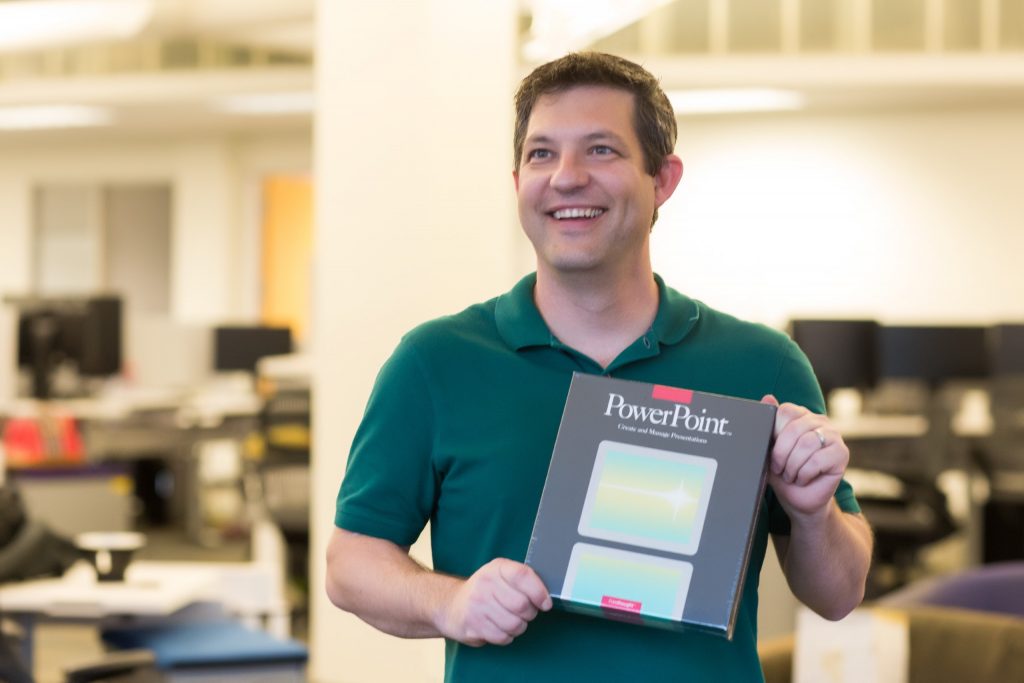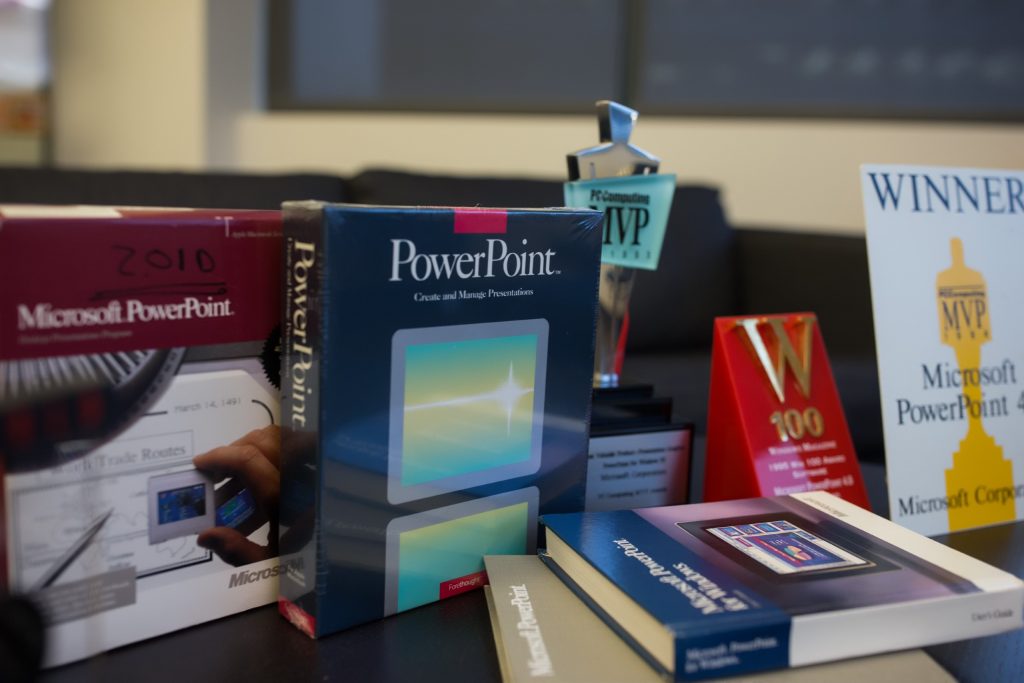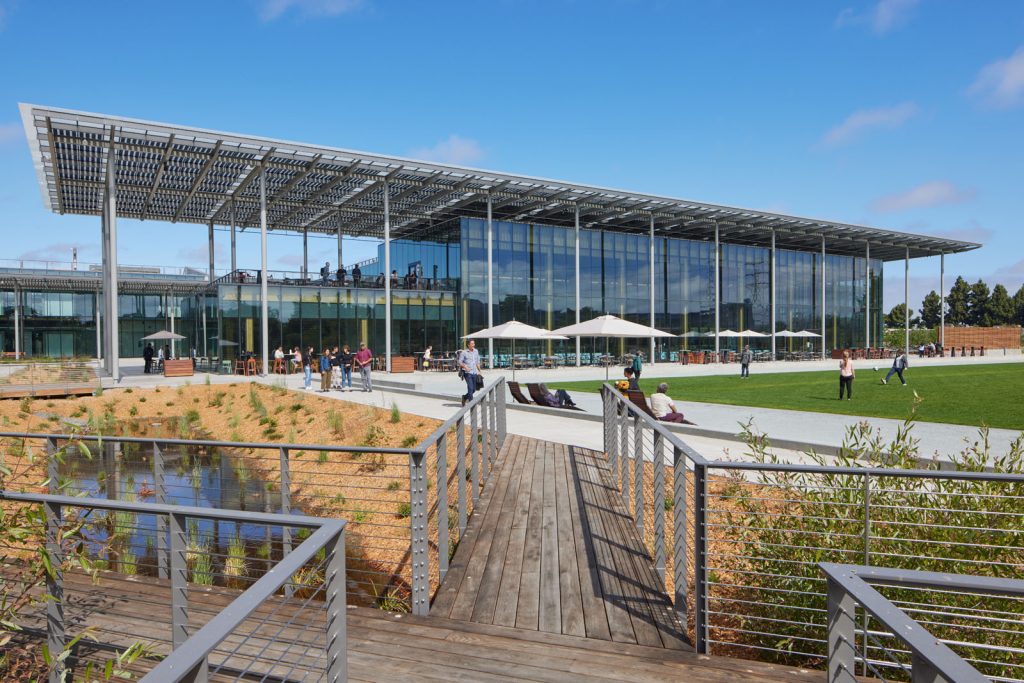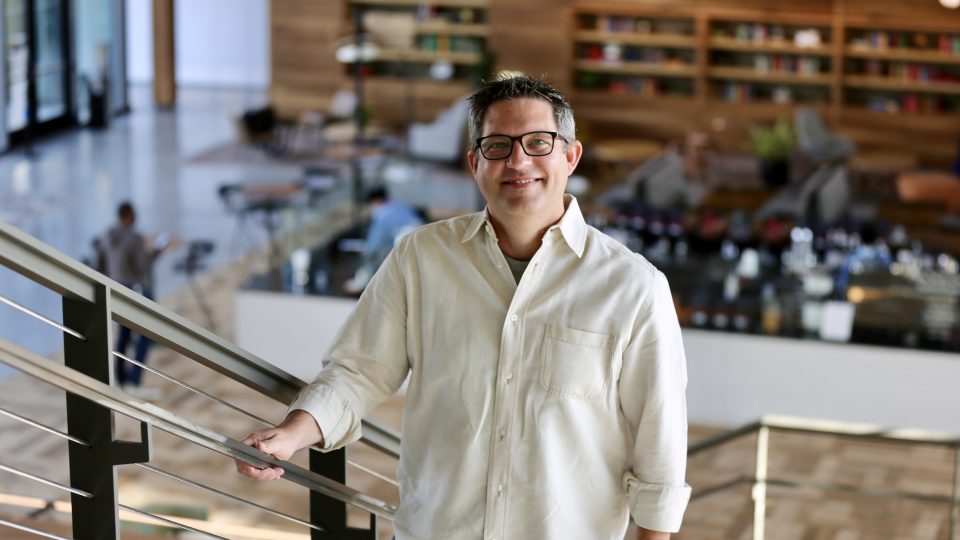These days, there are few things Shawn Villaron enjoys more than welcoming new colleagues into the fold at Microsoft. Knowing the talent in the Bay Area and knowing what a thrilling, transformative time it is in the tech industry, he’s excited for those who are just now strapping in for the ride.
“It’s amazing to think about the journey I’ve taken from a 20-year-old intern to where I am today,” he marvels. “Employees who are joining us today can build an incredible career here and we’re working every day to help them succeed.”
As vice president and group product manager for PowerPoint, Shawn also serves as the engineering site leader for Microsoft’s Bay Area region. Named to this role this past summer, Shawn is now formally responsible for shaping the employee experience, collaborating with local leaders on a shared agenda, influencing opportunities for the site, and driving engineering execution throughout the region.
“There is no chance I ever could have imagined this day would happen. Becoming the engineering site leader for Microsoft’s Bay Area region was never in the cards,” he says.
However, the site leader role is one he welcomes with pride. He’s spent his 25-year career at Microsoft in the Bay Area, and in many ways is the region’s ultimate champion.
“Over my time here, I’ve learned that relationships matter. I’ve had the opportunity to work with some really smart folks who’ve influenced everything from Azure to HoloLens to silicon development,” he says. “I look forward to drawing on those relationships to help us create the best experiences for our talent in the region.”
Where do you want to go?
Shawn’s time at Microsoft began in the mid-‘90s, at a time when “Forrest Gump” was breaking box office records, wide-eyed early adopters were using Netscape Navigator to browse the World Wide Web, and the company was asking “Where do you want to go today?” as it put the finishing touches on Windows 95. When you stop and think for a moment how far everything has come since then, you begin to appreciate that people like Shawn have not only played a part in such innovation, but also had a front row seat to a historic cultural shift.
“In the summer of 1994, I was at the University of Southern California, studying computer engineering and computer science, and I had the opportunity to move to the Bay Area to take a role as a program management intern on PowerPoint,” he recalls of those halcyon days. “I had a phenomenal summer, and then got the opportunity to come back the next summer in 1995 and do another internship. What was really amazing about that was I left my internship knowing this was a company where I wanted to have a career.”

 That’s precisely what happened, as Microsoft continued to grow, and PowerPoint was increasingly being more deeply integrated into the Microsoft Office suite.
That’s precisely what happened, as Microsoft continued to grow, and PowerPoint was increasingly being more deeply integrated into the Microsoft Office suite.
“In 1996, I came back as a full-time program manager on PowerPoint. I spent the first couple years working on individual features, improving the product. A few years later, I had the opportunity to run a team of program managers, where we worked on bigger and bigger areas of PowerPoint,” he explains. “About a decade into my career, I had the opportunity to become the head of product for PowerPoint, taking responsibility for the entire application. From there, I expanded my scope to include our shared graphics accountabilities in Redmond, as well as the emerging effort around video in Office.”
When Shawn looks back on those early memories, he is quick to point out that they felt anything but certain at the time.
“When I joined Microsoft, I was scared,” he admits. “I was always worried whether I belonged here, whether I could succeed. Today, I think we’d say I came in with an imposter syndrome.”
Inspiration in talent
In the years since, Shawn says Microsoft has made incredible strides in many areas, but one that speaks to him is how the company reminds its employees each and every day that they are invaluable elements of its success.
“If there’s any question about Microsoft’s commitment to the Bay Area, and all the employees of the Bay Area, if you look big and small, you’re going to find incredible proof,” he explains. “Look at the new Silicon Valley Campus. That’s a significant investment the company has made in our region. But it’s not about the buildings themselves; it’s about the employee experience those buildings unlock. The company recognizes that if we’re going to have world-class talent, we have to have a world-class employee experience.”
 Microsoft’s new campus in Silicon Valley. Learn more about this state-of-the-art building at https://news.microsoft.com/silicon-valley-campus.
Microsoft’s new campus in Silicon Valley. Learn more about this state-of-the-art building at https://news.microsoft.com/silicon-valley-campus.
Reflecting on the level of talent he has been surrounded by over the years, he calls it nothing short of inspiring.
“The Bay Area is unlike any other place on the planet. One of the things that sets it apart is that the diversity of talent we have here is unrivaled,” Shawn says. “We have experts in hardware, silicon design, artificial intelligence, machine learning, data science, web apps, scalable services. If you think of the talent you need to be surrounded by to inspire you, that talent is here.”
As part of his engineering site leader position, Shawn needs to seek out and cultivate such leaders in their fields. He enjoys watching early-in-career employees arrive at Microsoft, much like he once did as a 20-year-old intern and seeing how they refresh and reinvigorate those around them.
“What’s incredible is this talent is replenished as we bring people from around the globe to the Bay Area. We replenish that talent from our world-class universities. This is the talent epicenter of the world,” he explains. “The Bay Area mentality causes this world-class talent to strive for more, to be better, faster, to have greater impact. When you’re an employee at Microsoft in the Bay Area, you can’t help but participate in this, to be influenced by it. So, if you’re looking to have a career with a long trajectory, a career where you are among the best in the game, where you’re having the best impact, this is the kind of environment that will allow you to thrive and grow your entire career.”
Still learning
Over the years, Shawn has watched many mindsets, initiatives and programs rise, fall, and sometimes rise again. But, when asked which of these he thinks has made a particularly powerful impact on those around him at Microsoft, he cites the One Engineering system. Satya Nadella has been a driver behind the system since its debut, believing (as an engineer himself) that engineering productivity is a key driver in the company’s success. In the past, the 1ES system has been summed up with an old proverb: “If you want to go fast, go alone; if you want to go far, go together.”
 “When I think about One Engineering, I think the mindset is about seeking out opportunities for global maxima, and not local maxima,” he explains. “What I mean by this is every leader in the organization needs to understand we have a responsibility, an expectation, to make those around us better, make those businesses around us more successful. That comes in all shapes and sizes; it may be in sharing data and insights with each other, it may be building dashboards and components that can accelerate other peoples’ businesses, it may be sharing best practices in terms of how to be successful.”
“When I think about One Engineering, I think the mindset is about seeking out opportunities for global maxima, and not local maxima,” he explains. “What I mean by this is every leader in the organization needs to understand we have a responsibility, an expectation, to make those around us better, make those businesses around us more successful. That comes in all shapes and sizes; it may be in sharing data and insights with each other, it may be building dashboards and components that can accelerate other peoples’ businesses, it may be sharing best practices in terms of how to be successful.”
When introduced, 1ES represented a major shift in thinking, one that knocked down silos and eliminated redundancies. Shawn says it also resulted in a much-needed “two-way street” mentality that welcomed and embraced openness.
“With everyone around us trying to make each other better, we have to be mentally prepared to accept that help. As leaders, that means making sure we don’t allow ‘not invented here’ to drive our decision-making,” he says. “It requires us to make sure we don’t allow a lack of perfection to get in the way of progress. Just because something doesn’t meet my exact needs, that doesn’t mean I don’t use it and I build my own; it means I improve that shared component. And when you put all these together, that’s where you get the One Engineering concept, a mindset that allows all of Microsoft to succeed.”
It’s also a mindset dependent on the replenishment of competent, skillful, diverse talent. “It may sound corny, but it really comes down to people,” Shawn says with a smile. “The people are the reason why I’ve stayed at Microsoft so long. The people I work with, day in and day out, are some of the smartest, most hard-working, collaborative, inclusive people I’ve ever met.”
“Every day I show up for work, I still learn something new,” he marvels. “They challenge me to be a better self. But it’s more than just the people I work with, day in and day out. It’s the people that lead the company, who force us to think differently about culture and inclusion. They hold us to a high bar around corporate values of leading with integrity, having accountability and treating each other with respect.”
Shawn is also quick to point out perhaps the greatest benefit of building his career with Microsoft: being instrumental in the growth and development of real products that have impact on real customers.
“The best part of my job is speaking with people who use Word, Excel, PowerPoint, HoloLens; I hear how these things are impacting their lives. They may give me good feedback, they may give me bad feedback,” he explains. “It doesn’t really matter. Because that feedback from customers reminds me why I come to work every day. It shows the true meaning of the work we all do.”
If you are interested in learning what Microsoft Life in the Bay Area would mean for you, take a look at this video about our local culture: Microsoft thrives on Bay Area culture – YouTube. Job openings can be found here: https://aka.ms/MicrosoftBayAreaCareers.





